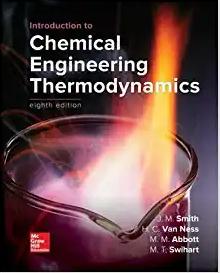Answered step by step
Verified Expert Solution
Question
1 Approved Answer
please answer questions using figure 3a ,3b Q3) Figure Q3 (a) illustrates a solenoid with a retum spring. (Total mark =40%) Figure Q3(a) The voltage
please answer questions using figure 3a ,3b 

Q3) Figure Q3 (a) illustrates a solenoid with a retum spring. (Total mark =40\%) Figure Q3(a) The voltage v(t) across the winding. causes a current u(t) to flow through the winding. which in turn generates a magnetic field. The magnetic field induces force f(t) on the plunger mass, M. The magnitude of this force is related to the current in the windings via the solenoid's electromagnetic coupling constant N, as shown below f(t)=Ni(t) The movement of the plunger generates a voltage. in the winding which oppose the applied voltage. The magnitude of this voltage is determined by the velocity of the mass and solenoid's electromagnetic coupling constant, as shown below: vb(t)=Ndtdy In addition, an ideal spring with Hooke law constant of K is attached to mass, which oppose the motion of the mass and returns the mass to its initial position when the current no longer flows in the winding. Therefore, we can represent the electrical elements of the system as shown in Figure Q3 (b) and the mechanical elements as shown in Figure Q3(c). The electrical and mechanical element are linked (glued together) by two equations above The Problem The objective of this question is to determine y(t) when v(t)=U(t). (i.e., the movement of the plunger when the input voltage is the unit step). The Method To do this you will separately determine, - The Laplace transform for the current I(s), and - The Laplace transform for the movement of the mass for a given force F(s). Then you will 'glue' these two expressions together using equation 1. Once that is completed the expression describing Y(s). Finally we take the inverse Laplace transform to give y(t). and which you will plot using Matlab. I. Determine the differential equation which describes the electrical lumped circuit model in Figure Q3 (b). (5%) II. Take the Laplace transform of your differential equation and rearrange it to produce an expression for I(s). ( 5%) III. Determine the differential equation which relates f(t) and y(t) in figure Q3(c). (5\%) IV. Take the Laplace transform of your previous differential equation. (5\%) V. Substitute your expression for l(5) into the previous expression, and then it rearrange to determine an expression for (s), (5\%) VI. For this solenoid RL and therefore the electrical time constant RL0 is negligible (in a similar fashion to the simplification made in the notes for the derivation of the transfer function for small DC motors). Thus, you can simplify your transfer function by dividing top and bottom of your expression by R, and then removing any product terms which include L/R. (5%) VII. Assuming M=0.1kg,R=5,K=0.1 and N=1 volt sec/ coulomb, substitute in the values for the parameters and take the inverse Laplace transform to determine y(t)(5%) VIII. Plot the time response y(t) and frequency response using MATLAB. (5%) 

Step by Step Solution
There are 3 Steps involved in it
Step: 1

Get Instant Access to Expert-Tailored Solutions
See step-by-step solutions with expert insights and AI powered tools for academic success
Step: 2

Step: 3

Ace Your Homework with AI
Get the answers you need in no time with our AI-driven, step-by-step assistance
Get Started


